In The Footsteps of Henry George
The Philadelphia Story
Edward J. Dodson
[A booklet prepared for distribution at the 2005 Council of Georgist
Organizations conference, held at the Warwick Hotel, Philadelphia,
Pennsylvania. 3-7 August, 2005]
Although Henry George was born here in Philadelphia, and the small
house in which he first lived now serves as the Philadelphia extension
of the Henry George School, George never returned to Philadelphia to
live as an adult. When he brought his wife and children East from
California in 1881, they established their residence in the Ft.
Washington area of New York City. And, as the saying goes, the rest is
history.
George did attract some converts to his views from his home town.
One, W.J. Atkinson, made a $500 contribution in 1887 to fund a broad
distribution of
The Standard during the presidential campaign. There was also
Horace Traubel, editor of the Conservator, who helped to
organize the Single Tax Club during the late 1880s.

Horace Traubel - 1905
During this same period, Joseph Fels became a trustee of the Ethical
Society, and in 1890 took on the duties of Program Chairman. He
arranged for the Young People's Section to hold its meetings and
classes at the Philadelphia Single Tax Club.

Joseph Fels
One of the guest speakers not long thereafter was G.G. Steven, who
spoke on Henry George. Eventually, the membership of the Ethical
Society experienced a split over efforts by Fels to have Traubel's
newspaper endorsed nationally by the Chicago Congress and Convention
of Ethical Societies. Fels, Traubel and others withdrew from the
Ethical Society as a result, charging the organization "did not
stand for democracy and freedom, but for provincialism and exclusion."
They formed a new organization, the Fellowship for Ethical Research,
and began meeting weekly at the Single Tax Club.
Early in 1895, the members of the Philadelphia Single Tax Society
decided to concentrate their efforts to get the Single Tax adopted by
one state. Delaware was chosen for the campaign, and in mid-June they
held a number of outside meetings in the City of Wilmington and other
Delaware towns. A National Committee appointed Philadelphian A. H.
Stephenson to oversee the campaign, along with Jackson H. Ralston (a
Maryland resident), and Harold Sudell, of New Castle, Delaware. Frank
Stephens (a few years later one of the co-founders of Arden) arranged
the meetings.

Frank Stephens
Another Philadelphian who participated in the campaign was Haines D.
Albright. Still active into the twentieth century, in 1926 he was a
delegate to the Henry George Congress held in Philadelphia.
In the Fall of 1895, a number of meetings were held in the Wilmington
Opera House, the first of which was addressed by Henry George. Despite
the effort, the campaign failed to gain voter support and the effort
in Delaware dissipated.
The nation was already in the midst of a serious industrial
depression. With large numbers of workers idle in 1897, Fels helped to
launch a "vacant-lots cultivation movement" in Philadelphia.
The program had been introduced in Detroit, Michigan a few years
earlier, with considerable success.
The Single Tax Society in Philadelphia survived the death of Henry
George to continue working for the cause George championed. It is
likely that Joseph Fels was in attendance when in April of 1901, the
organization hosted the troublesome anarchist Emma Goldman. She had
come to Philadelphia to speak at the Social Science Club on North
Broad Street, but was prevented from speaking by a strong police
presence.
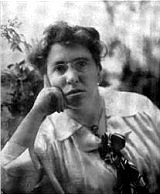
Emma Goldman
A few days later, she delivered a speech in secret to some two
hundred people at a meeting of the Single Tax Society in the
Mercantile Library Hall, 10th and Chestnut Streets.
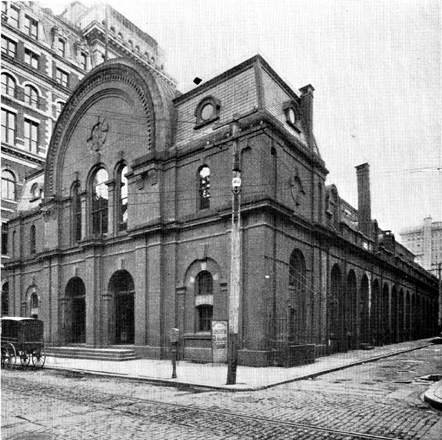
Philadelphia Mercantile Hall
Soon thereafter, Joseph and Mary Fels departed for England. Their
home at 3640 Chestnut Street was made available to Earl Barnes, a
lecturer with the American Society for the Extension of University
Teaching. Fels spent very little time in Philadelphia after 1901,
returning only occasionally to deal with business matters.
Philadelphia also provided a temporary way-station for one of
Fairhope's more eclectic residents, Wharton Esherick. After graduating
from the Philadelphia Academy of Fine Arts, Esherick - an admirer of
Thoreau - purchased an abandoned farmstead outside of Philadelphia, at
Paoli. Then, after several rough years trying to survive on the land,
he and his wife left Paoli in 1919 and headed for Fairhope, where he
assumed the position of an art teacher at the School of Organic
Education.

Wharton Esherick
For reasons we have not been able to uncover, he stayed in Fairhope
for less than two years. He returned to his Paoli home and immersed
himself into wood carving, earning a reputation as the "dean of
American craftsmen." Warned that a quarry company was interested
in purchasing land adjacent to his own, he borrowed heavily to acquire
twelve additional acres of land, ensuring "the tranquility of his
physical surroundings." Esherick was also very much involved in
Will Price's design of the rustic community of Rose Valley, in
suburban Philadelphia, especially the Hedgerow Theater.
The departure of Joseph Fels from Philadelphia left the local Single
Taxers without a leader prominent in the community and able to bring
influential civic leaders to the table. This did not deter them from
trying. One example: the founding of the Single Tax Party in 1915 was
inaugurated in Philadelphia.
A local physician attached to the municipal court, Louis Robinson,
was also active during this period. In 1919 he delivered a speech at
the Friends Meeting House on "The Single Tax and the Just
Distribution of Wealth."
When Single Taxers reorganized for their next national political
campaign in 1924, forming the Commonwealth Land Party, the party
called upon Julian Hickok, who had moved to Philadelphia in 1916 to
work as a mechanical engineer for Westinghouse Corporation, to run as
a candidate for the U.S. House of Representatives. Then, in 1926, he
campaigned for the Office of Governor of Pennsylvania, joined on the
ticket by Ardmore resident, Lewis D. Ryan, running for
lieutenant-governor.
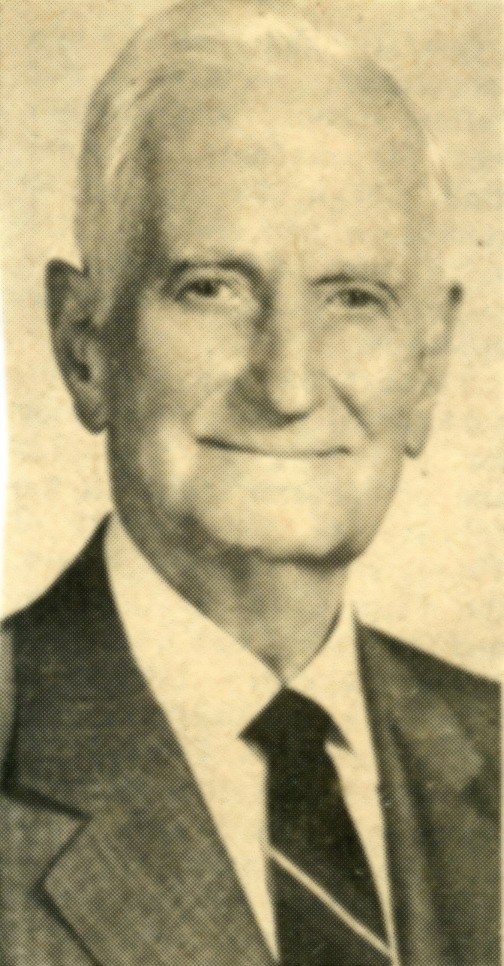
Julian Hickok
Francis Neilson, prominent in the Georgist movement his entire adult
life, noted in his autobiography that the Henry George School was one
of the rare places where people of all races, religions and economic
standing were welcomed without prejudice. Yet, early on, very few
African-Americans were active in the Single Tax movement.
Philadelphian Frank Farrell was an exception, although we have not
been able to uncover any details on his background or involvement.
As mentioned above, the Georgists held the annual Congress here in
1926. Additional delegates from Philadelphia were the Rev. Frank A.
Brown, the pioneer suffragist Mrs. E.C. Evans, George W. Deforest (of
Swarthmore), L.W. Garratt (of Wayne), Alice H. and Nora E. Garrod (of
West Chester), John Goldsmith, George H. Hallett Jr., George Haug,
Henry W. Hetzel, Julian P. Hickok, W.J. Morphy, William J. Schaeffer,
Charles J. Schoales, Henry b. Tawressey and Thomas W. Swan. Mr. Swan
was the only African-American delegate at the Congress. Addressing the
Congress, he let everyone know that Frank Farrell was alive and well,
still living in Philadelphia.
A keynote speaker at the Congress was the daughter of Lucius F.C.
Garvin, who served two terms as Governor of Rhode Island. Miss Garvin,
a resident of Arden, Delaware, delivered a talk on free trade.
A resident of Montgomery County, E.M. Mehl, remained active in the
Commonwealth Land Party and was referred to at the time as "one
of the oldest and best known of the old-time Henry George campaigners."
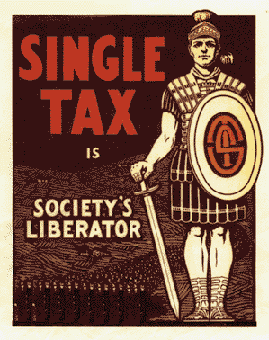
THE MOVEMENT SETTLES ON TAX SHIFTING
The 1920s represented the height of the political campaigns for the
Single Tax. The Depression years seemed to demand much more than a
restructuring of how government raises its revenue. And, here as
elsewhere, the full employment war years diverted the national
attention away from long-standing domestic issues.
After 1945, the Georgist movement started to rebuild. The programs of
the Henry George Schools were expanded into many cities across the
United States, and the number of new converts encouraged many of those
who remained from the pre-war days. Yet, the success stories where
slow in coming. Even in Pittsburgh, the efforts to raise more of the
city's revenue from the taxation of land values awaited the decline of
the steel industry and an escalating financial crisis during the
1970s.
One of the most vigorous campaigners for land value taxation during
the two decades following the Second World War was the Rev. W. Wylie
Young, who died in 2002 at the age of 103. Wylie lived in Swarthmore,
Pennsylvania for many years. His 1976 booklet,
Antidote for Madness, profoundly makes the case for land value
taxation. Those of us who knew him, remember him fondly for his energy
and commitment.
During the 1950s, a Philadelphia Georgist named John D. Auld
initiated an effort to sell Georgist books to what he called "tax-ridden"
groups. He also proposed to the Pennsylvania and New Jersey state
legislatures that a tax on land values be implemented to pay for
highway construction.
Another life-long Philadelphian who argued the case for land value
taxation is David Zwanetz, an attorney and long-time member of the
City's Board of Revision of Taxes.
By the early 1980s, the efforts of local Georgists in Philadelphia
seemed to be yielding very positive results. A few members of City
Council expressed interest in sponsoring enabling legislation, and
Councilman James Tayoun organized hearings on the subject. Many local
Georgists as well as others testified on behalf of a proposed bill.
Phil Finkelstein, at the time Director of the Henry George School in
New York - and a former deputy mayor of the City of New York -
delivered a stirring address to the council members that is still
worth the time to read today. Soon thereafter, however, Jim Tayoun was
forced to leave City Council, and momentum for the legislation
dissipated.
As the fortunes of this city worsened, other Pennsylvania communities
- Harrisburg, in particular, were moving forward, thanks to the hard
work of Steve Cord, Hanno Beck and, in more recent years, Josh
Vincent.
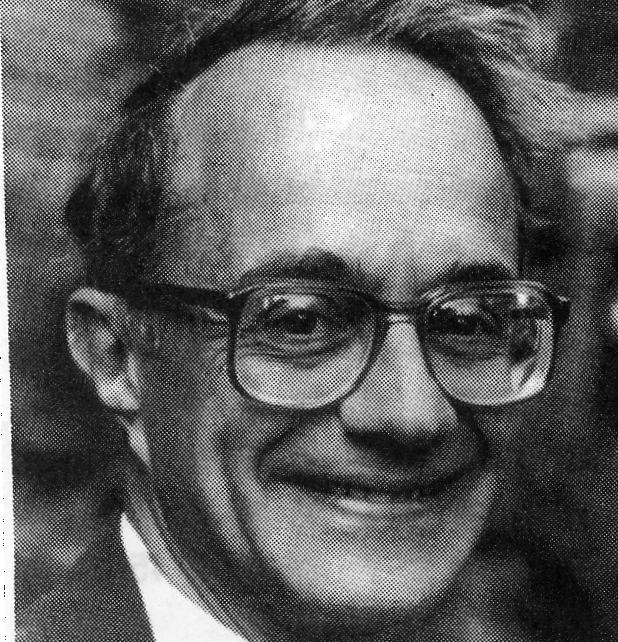
Steven Cord
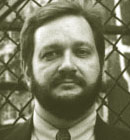
Josh Vincent
Here, in Philadelphia, we kept the faith and continued to put our
ideas before elected officials and other civic leaders.
Today, we are able to count Josh Vincent as a Philadelphian. And,
having the Henry George Foundation of America headquartered here, we
Philadelphia Georgists believe, is helping to bring this city closer
to adopting the Georgist tax shift than ever before. Our efforts
gained tremendous momentum when Jonathan Saidel hired Bruno Moser in
2001 to work in the Office of the Controller on the study that
analyzed what changes the City needs to make in how it raises its
revenue. We put together two programs on land value taxation hosted at
the Federal Reserve Bank in Philadelphia that were well-attended and
received some media coverage.
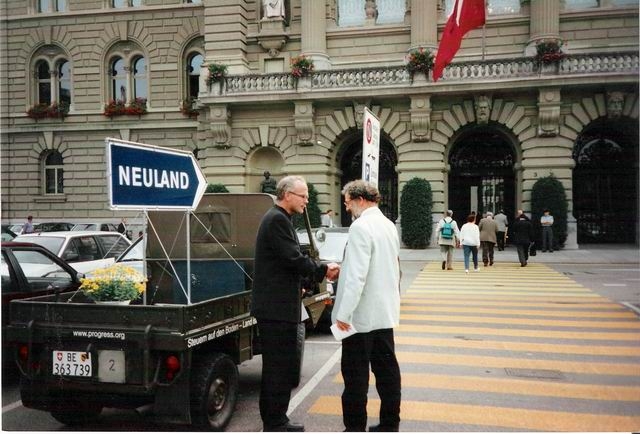
Bruno Moser - Back in Switzerland
THE STORY OF THE HENRY GEORGE SCHOOL
Henry George's birthplace was acquired in 1926 by the Henry George
Foundation of America and provided rental income to the Foundation
until 1957, when the building was purchased with donations from many
Georgists by the Henry George School to give the extension a permanent
location.

Henry George Birthplace - 1958
The extension had been established in 1935 (just three years after
the school was founded in New York). Julian Hickok was instrumental in
getting the extension up and running during the early years, and, as
indicated above, he was deeply committed to the political effort as
well. Well into his 80s, Hickok ran as a Republican candidate in 1971
for a seat on the Philadelphia City Council.
In terms of life-long service, Lu Cipolloni has few equals. She
completed her Henry George course work in 1937, and has since then
served as registrar, provided administrative support and, when called
upon, taught classes, under eight different extension directors.
Julian Hickok turned over the director's role in 1940 to Edwin S.
Ross, who came to Philadelphia from New York City. When war broke out,
however, Ross resigned to enter the military. Joseph Stockman,
something of a scholar on Chinese history and culture, succeeded him
as extension director, remaining until ill health required him to step
down in the early 1960s. George Collins, who was teaching at the
school in New York, then came to Philadelphia to take over.
One of the teachers at the school during the early 1950s was Jacob
Thomas Ames. After completing the courses, he helped to improve the
quality of the school's promotional materials.
Then, there is Olive M. Moore, active in the movement during the
1950s and 1960s, and teaching briefly in 1962. Olive attended the
conferences at Baldwin-Wallace College in 1955, at Rutgers University
in 1959 and in Detroit, Michigan in 1960. She eventually relocated to
Florida; then, in 1979 the Georgist Journal printed her report
on a trip to the Panama Canal zone.
Richard Biddle completed the school's program in the late 1970s and
began teaching in 1979. Just a year later, in 1980, he was interviewed
by the Philadelphia Inquirer on land value taxation in
connection with his campaign for a seat on City Council. Richard was
instrumental in organizing with other Georgists the Incentive Tax
League of Delaware Valley. With but a few lapses, he has continued to
teach over the years; and, since 2004, he has served as Acting
Director of the school's extension here in Philadelphia, taking over
for Dan Sullivan, who returned to Pittsburgh to pursue other
opportunities after a year as extension director.
Mike Curtis, who comes by his Georgist commitment thru family ties,
became involved with the school at the beginning of the 1970s. For
much of the decade and through the 1980s, he devoted his spare time to
teaching Henry George's political economy to inmates of the Smyrna,
Delaware prison system and to residents of Arden and the surrounding
communities. Then, in 1989, Mike was appointed extension director here
in Philadelphia after George Collins left to take on the director's
position in New York.

George Collins
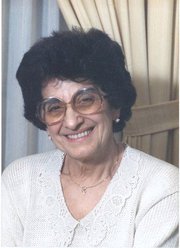
Lu Cipolloni
It was also in the 1970s that Kris Feder - today on the economics
faculty at Bard College in New York - completed the school's program
and volunteered as a teacher. Kris taught from 1978 until 1980,
leaving to pursue, first, a B.A. degree in Philosophy at the
University of Pennsylvania, then a Ph.D. in economics at Temple
University.

Kris Feder
Jake Himmelstein came to the school in 1967 and joined the faculty
after completing the program. In 1980, he was elected to the school's
board of trustees in New York. Jake also ran for public office in his
home community on a platform that prominently included the taxation of
land values.
It was also during the 1970s that Don Hurford began to teach at the
school and become actively involved in the advocacy work of the
Incentive Tax League. Another Philadelphian, Patricia Lowe, also began
her long-time association with the school and the drive to get
Philadelphia into the ranks of the two-rate cities.
Thus, the decade of the 1970s saw the beginning of a small but
dedicated group of people coming together with the extension as our
base of activities. Hundreds of others had come through the school's
courses and seminars and were on the school's mailing list. Many
showed up for special events, celebrations and activities.
Ed Dodson found his way to the school in 1980. After completing the
three-course program, he joined the school's all-volunteer faculty. He
soon began working with Richard Biddle, Jake Himmelstein and others to
promote land value taxation through the Incentive Tax League
organization. And, with Delaware Georgist Frank Nelson, he became
co-editor of the Henry George Foundation's newsletter, Equal
Rights - an assignment he has recently taken on anew.
Another Philadelphian who has devoted much of his adult life to the
Georgist cause is Ken Ford. After studying history under Steven Cord
at Indiana University of Pennsylvania, Ken returned to Philadelphia in
1984 and enrolled in the school's program. He later joined the faculty
and taught consistently for the next fifteen years. In 2001, Ken
succeeded Mike Curtis as extension director.
GEORGIST CONFERENCES COME TO THE PHILADELPHIA AREA
A long period of time passed after the 1926 Henry George Congress
before the next gathering occurred in the Philadelphia area. The next
opportunity came in 1975, when the Georgist conference was held in the
suburban town of Bryn Mawr, at Harcum Junior College.
Three years later, the annual Georgist conference returned to Bryn
Mawr, this time on the campus of Bryn Mawr College. The venue was
secured thanks to the efforts of Arthur Duddon, a professor of history
at the college and author of the book,
Joseph Fels and the Single Tax.
Then, on the 150th anniversary of Henry George's birth, the annual
Georgist conference in 1989 was held here on the University of
Pennsylvania campus. The Council of Georgist Organizations and the
International Union for Land Value Taxation and Free Trade hosted this
conference jointly. Earlier that year, the trustees of the Henry
George School approved funding for what amounted to a reconstruction
of the Henry George birthplace. The building was approved for
historical designation, which required that the work be closely
supervised. The morning the conference opened, the building was still
a construction site. Our crew of volunteers worked with the
contractors that morning in a frenzy to get the birthplace ready for
visitors later that day. Henry George's granddaughter, Agnes George
deMille, joined a large gathering of conference attendees to walk thru
the restored birthplace, while those of us who had been there all
morning tried not to collapse from exhaustion.
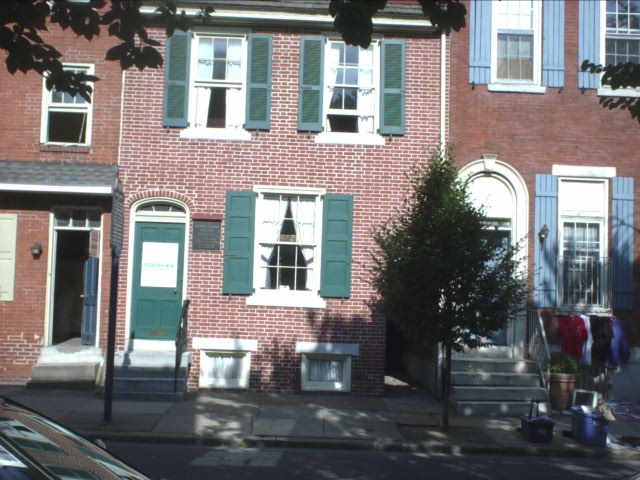
Henry George Birthplace - 2005
APPENDIX: A PARTIAL LIST ADDITIONAL OF HENRY GEORGE SCHOOL
TEACHERS AND VOLUNTEERS OVER THE YEARS
- Bayo, Al (1970s, 1980s and
1990s)
Taught the course, "World Perspectives"
- Blasberg, Nathan (1965)
- Cooper, Nathan (1950s)
- Crawford, Don (1979)
- DeStefano, Nicholas (1967)
- Douty, Judith (1990s)
- Edgar, Warren (1950s)
- Fuiman, Harry (1940 and the
1950s)
- Gray, Samuel (1985 - 1992)
Taught the course, "How Wall Street Works"
- Jasner, Josephine R. (1940s
on)
Assisted in project to organize the school's library
- Jones, Nelson (1940s and
1950s)
- Kalmbach, Frank (1950s)
- Kelley, Cameron (1990s)
- Koenig, Henry (1966)
- Lloyd, Mark (1970s)
Taught the course, "How Wall Street Works"
- Martines, Humbert (1940s and
1950s)
- McCaffery, Dennis F. (2004)
- McMillan, Donald (1967)
- Moore, Elizabeth A. (1940s
on)
Assisted in project to organize the school's library
- Murphy, Marcia (1960s and
1970s)
- Parrilla, Jose (1970s and
1980s)
- Posmontier, Deborah
- Raby, Roy (1950s)
- Roderick, Joseph (1980s and
today)
Returned after too long an absence as a member of the school's
faculty
- Roman, Doug (1980s and 1990s)
Taught the course, "Money and Banking"
- Sage, Joan (took the courses
in the early 1990s)
A stalwart supporter who attends most of the school's seminars
and discussions
- Scheerbaum, Charles (1930s and
1940s)
- Schneider, Ernest (1930s)
- Urban, John (1950s)
- Walton, Emma (Dee) (1950s)
- Wilson, Cecilia (1970s and
1980s)
- Wood, Jonathan (1960s)
Developed and taught the course, "How Wall Street Works"
- Yantis, Stanley (1960)
- Yeatman, Artie (1970s on)
Provided funding support for the school's program in Arden,
Delaware, the HABS study of the Henry George birthplace (which
paved the way for its later restoration)
|